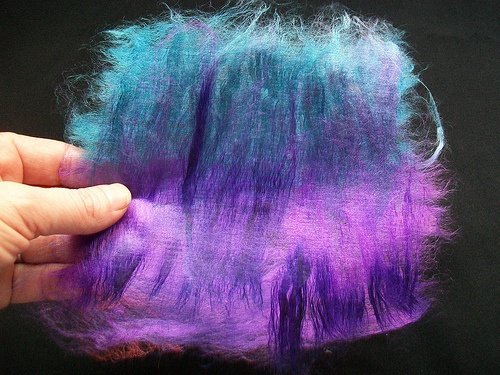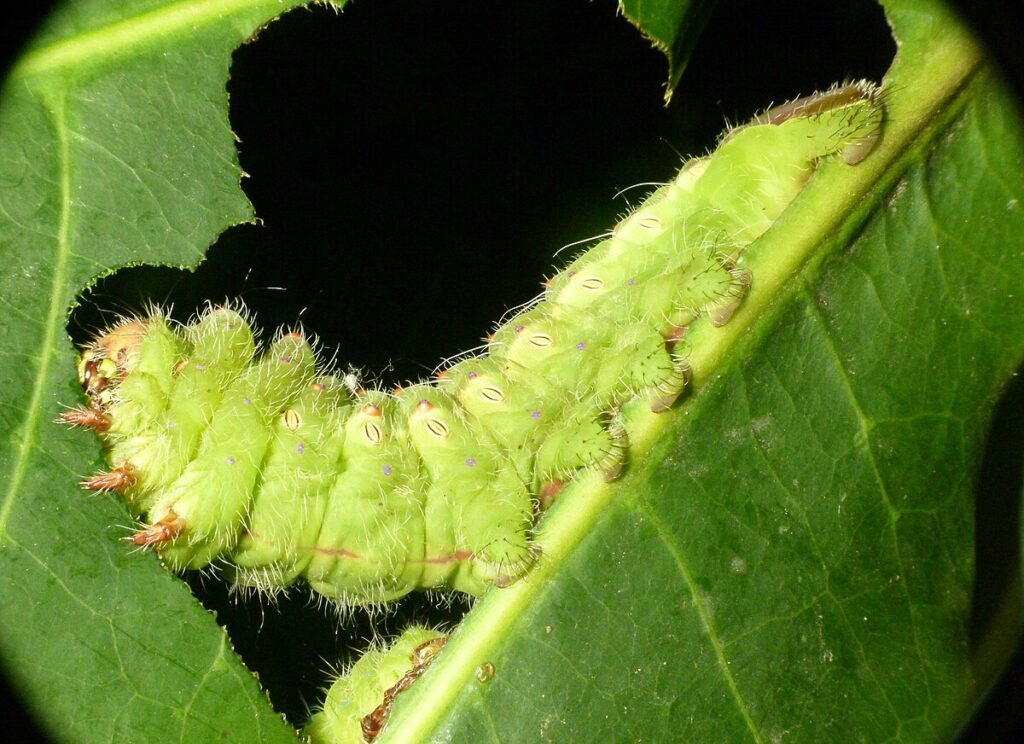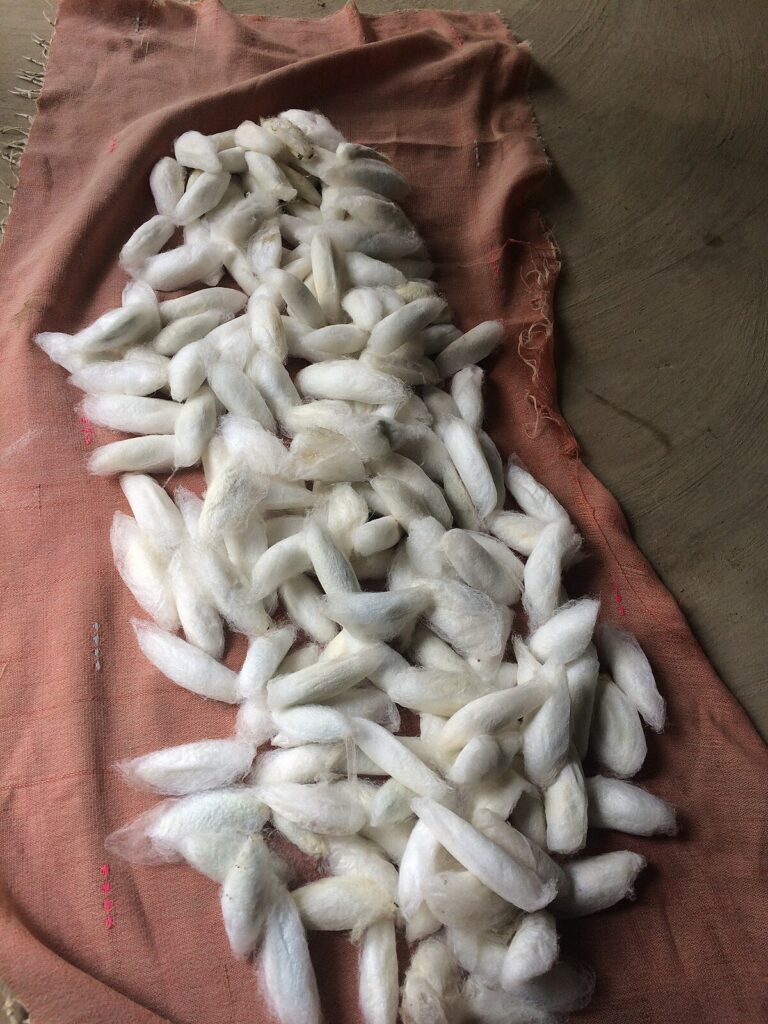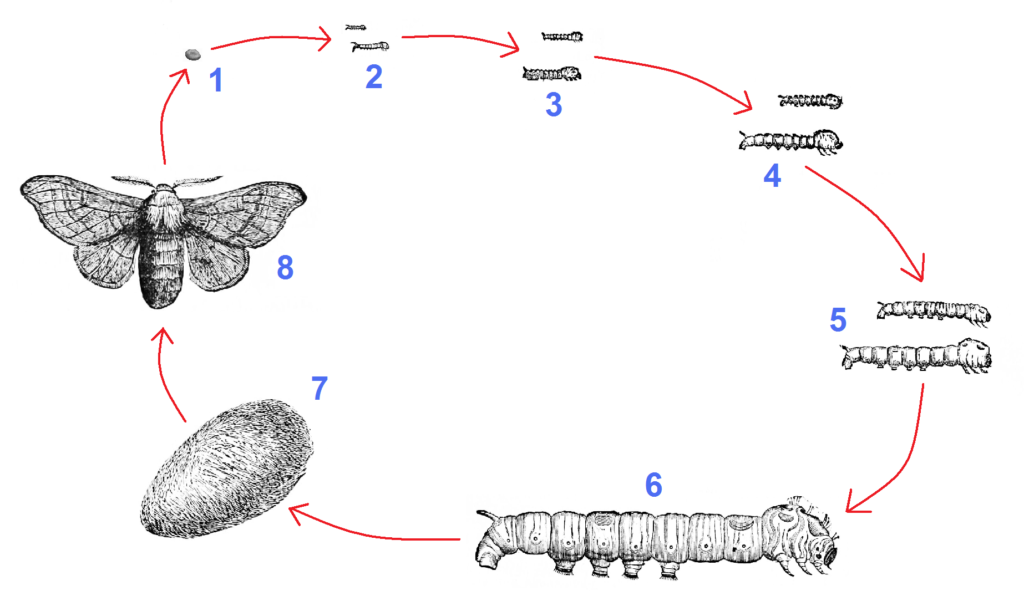Sericulture is the breeding and management of insects for the production of silk. All the four varieties of natural silk, mulberry, tassar, eri and muga, are produced in India. India ranks third among the mulberry silk producing countries of the world.

Silks are of two main types, mulberry silk or cultivated silk and non-mulberry silk or wild silk.
The non-mulberry silk industry is found in Assam, Bihar, Bengal, Odisha and Madhya Pradesh. There are three main types of this silk.
(i) Tassar (tussore, tussur) silk (kosa) is obtained from the oak-feeding larvae of the silk moth (Antheraea roylei and A, mylitta). It is a native of India and China. Tassar cocoons are attached by a peduncle to twings of sal trees.

(ii) Muga silk is produced by larva of Antheraea assamensis in Assam. It is golden yellow in colour and superior to tassar silk in gloss and other qualities. It is an excellent material for embroidery
(iii) Erior Arundi silk is produced by larva of philosamia ricini and is made in Bengal, Bihar, and Assam. The eri silkworm feeds on castor leaves and is reared indoors. The cocoons are soft and white or yellowish. The filaments are very delicate, so that the yarn is spun like cotton.

Farmers now harvest three times the silk cocoons they did ten years ago. Depending upon the number of crops of silkworm cocoons raised per year, sericulture is univoltine, bivoltine or multivoltine.
Rearing of mulberry silkworm:- The life history of the silk moth passes through four stages, eggs, larva pupa and adult

Eggs:- During sericulture, the female ssilk moth is made to lay eggs on sheets of paper. About 300-500 eggs are laid at a time. The eggs are kept in cold storage for about six weeks. They are then washed in water and dried indoors
Larva (silkworm):- In about 10 days the eggs hatch into silkworms. The larvae are fed on pieces of mulberry leaves for 10 days. The silkworm pass five stages. Moulting takes place after each stage, and the larval skin is cast off. At the end of the fourth stage, the silkworm goes into a ‘figure of eight’ position and secretes a coccon around itself.
Cocoon formation:- The cocoon is formed by two pairs of glands. Liquid secretions of a proteinaceous material called fibroin emerge from the glands called spinneret. They harden on exposure to air forming twin filaments. A gummy substance called sericin and is secreted by the second pair of glands (spinnerets) cements the two filaments together.
Silk is continuous filament, with a usable lenth of 600-900 meters. After the cocoon is completed, the larva becomes inactive for 10-15 days, and is transformed into the pupa or The pupa is killed in the cocoon by dipping water, or by steam or hot air.
Degumming:– Silk containing sericin is called raw silk. Sericin is a gummy substance which is usually retained till yarn or fabric stage, because it gives protection during processing. After weaving, the silk cloth is boiled to remove the excess of natural gum. This process is called degumming of silk. It leaves the silk soft and lustrous and reduces its weight.
Common diseases of silkworm are pebrine by protozoan Nosema bombycis, muscardine by fungus Spicaria and Botrytis and flacherie by virus.
Sericulture is the practice of rearing silkworms for the production of silk. It involves the cultivation of mulberry trees, the rearing of silkworms, the harvesting of cocoons, and the extraction of silk threads. The most commonly used silkworm species in sericulture is the Bombyx mori.
The life cycle of a silkworm consists of four main stages:
- Egg: The female moth lays eggs, which hatch into larvae.
- Larva (Caterpillar): The larvae feed on mulberry leaves and undergo several molts.
- Pupa (Cocoon): The caterpillar spins a silk cocoon around itself and transforms into a pupa inside the cocoon.
- Adult (Moth): The adult moth emerges from the cocoon, mates, and the cycle begins again.
Ideal conditions for silkworm rearing include:
Temperature: 20-28°C (68-82°F)
Humidity: 70-85%
Ventilation: Good airflow to prevent disease
Cleanliness: A clean environment to avoid infections and diseases
Mulberry Leaves: Fresh and high-quality mulberry leaves as the primary food source for the larvae
Silk is extracted from the cocoon through a process called reeling. The steps include:
Stifling: Killing the pupae by steaming or drying the cocoons to prevent them from emerging as moths and breaking the silk thread.
Boiling: Boiling the cocoons to soften the sericin (the protein that holds the silk threads together).
Reeling: Unwinding the silk threads from the cocoon. Multiple threads are combined to form a single silk strand, which is then spun into silk yarn.
The major types of silk produced in sericulture include:
Mulberry Silk: The most common and commercially significant type, produced from the Bombyx mori silkworms.
Tasar Silk: Produced from Antheraea mylitta silkworms, found in India.
Eri Silk: Produced from Samia cynthia ricini silkworms, primarily in Assam, India.
Muga Silk: Produced from Antheraea assamensis silkworms, exclusive to Assam, India.